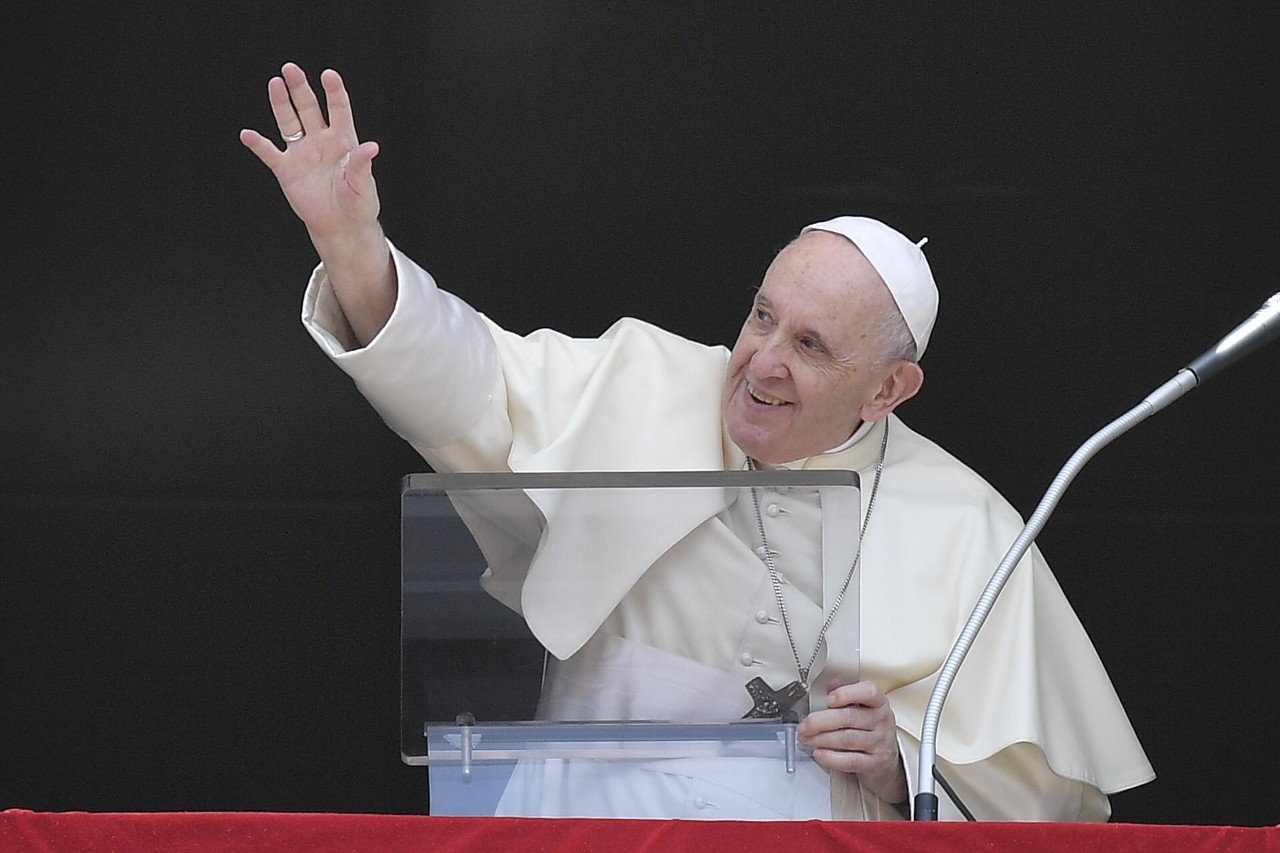
Credit to Image: via Wikimedia Commons
‘Messiah’ used to refer to a political king. Scripture scholar John J. Collins explains we got from there to Jesus Christ.
The story of the Messiah in the Bible is a complicated one. In the earliest biblical texts, the word originally referred to the present king. It later came to refer to some future ruler, then eventually a heavenly redeemer along the lines of the archangel Michael before, in the New Testament, Jesus is born and the mantle of Messiah falls firmly on his shoulders. The word’s history is convoluted, and to understand it’s necessary to know a little about apocalyptic visions, ancient Near Eastern mythology, and ancient Hebrew.
So why bother? Isn’t it enough that Christians today know about Jesus our Messiah? John J. Collins, professor of Old Testament Criticism and Interpretation at Yale Divinity School, firmly disagrees. To understand who the Messiah is for Christians today, he says, we need to know who the Messiah was to the people for whom the Bible was written.
“Biblical texts were all written in particular times and places,” says Collins. “They were meant, first of all, to make sense to the people in those times and places.” If taken out of their original context, these texts can become distorted and easily misused.
For that reason, Collins says, it’s important to recognize how the idea of a messiah developed in a particular time, culture, and religious faith.
What does messiah mean?
It means “anointed one.” The term was originally used to refer to the king. There are a couple of stories in the Bible about Samuel anointing Saul or, later on, Elisha anointing Jehu, a king in Northern Israel. In Psalm 2, the king is addressed as “God’s anointed.”
Over time the word developed the connotation of something in the future—of a time when there is no longer an actual king. To call somebody anointed meant that he had a special role to play, whether or not any anointing oil was used.
How did the word messiah come to mean a future savior figure, as we understand Jesus Christ today?
2 Samuel, Chapter 7 tells the story of God’s promise to David that one of his sons would always sit on the throne in Jerusalem.
That promise held good for about 360 years, which maybe is a reasonable approximation of forever. But then the Babylonians came in and put an end to the native kingship in Jerusalem.
The people had a record of a divine promise that something would last forever and had to face the fact that this was actually not the case. This is what gives rise to the hope that God will restore the monarchy, which is to say bring a new messiah, a new anointed king. People’s original messianic expectations were the hope for the restoration of the monarchy.
When did people start to understand the future messiah to be the Son of God?
That’s bound up with the fact that the king was traditionally thought to be some kind of divine figure.
One of the classic texts for that is Psalm 2. It talks about all the nations that are rising up against the Lord and his anointed, or his messiah. The psalm says, “You are my son. Today, I have begotten you. Ask of me, and I will make the nations your heritage.”
This shows the idea that the king was the Son of God. If you’re the Son of God, that makes you divine in some sense.
There’s this whole mythology of how the king was begotten by God that I think developed from the Egyptians. There’s a couple of other passages in Psalms that show this as well. One is Psalm 110: The text, unfortunately, is corrupt, and I think it’s because the scribes didn’t like the idea that the king was begotten by God. The passage says, “But like the dew, I have begotten you.”
Notice, the text doesn’t say “adopted.” It says “begotten.” Of course, when we read it today we say that it’s metaphorical. But whether anybody in ancient Jerusalem would have said it’s metaphorical is another question. I think they would have taken it quite seriously.
By the time you get to 2 Samuel, Chapter 7, this idea has been downplayed a bit. David offered to build a temple, and God says, “I don’t want a temple. I will build you a house,” meaning a dynasty. “I will raise up your offspring after you who shall come forth from your body, and I will establish his kingdom . . . . I will be a father to him, and he will be a son to me. When he commits iniquity, I will punish him with the rod such as mortals use, but I will not take my steadfast love away from him as I took it from Saul.”
This passage is still saying that the king will be a son to God, but the whole context is different. In Psalms, when God says, “This day, I have begotten you,” the following words aren’t, “And I’m going to punish you with a rod.” I think this shows how the role of the king is downgraded a bit: There’s now a place for discipline and punishment in the king’s relationship to God.
Jesus gets called the Son of Man in the New Testament. Where does this term come into the discussion of the Messiah?
The term Son of Man is a horse of a completely different color.
First of all, the expression Son of Man simply means human being. In Hebrew, “son of” means the member of a class. In the book of Ezekiel, Ezekiel is repeatedly addressed as “Son of Man,” and it just means human being.
This changes in the Book of Daniel’s apocalyptic visions. Apocalyptic visions are very colorful, highly symbolic visions that are found in Daniel and again in the Book of Revelation. There were also probably older apocalyptic visions in the Books of Enoch, which aren’t part of our canon but are in the canon of the Ethiopian church.
One of the features of apocalyptic symbolism is that things are typically depicted as something other than what they actually are. In the case of Daniel, he sees four beasts coming up out of the sea. Then he sees “one like a Son of Man coming on the clouds of heaven.”
Later he finds out that the four beasts represent four kings that arise on the earth, and that the beasts then aren’t actually beasts, they’re kings or kingdoms. The human figure that he sees coming with the clouds isn’t a human figure either.
Who is it?
Later on in the Book of Daniel, that figure is identified as the archangel Michael, who is called the prince of Israel. So the “one like a Son of Man” in the Book of Daniel is, first of all, the archangel Michael.
Daniel’s vision draws on very old mythological symbolism that we can trace back to the Canaanites. Those very old texts talk about a figure who rides on the clouds as well: Baal. Baal receives the kingdom from a high god with a white beard, named El.
In most of the Hebrew Bible, the figure who rides on the clouds is Yahweh, the God of Israel. But here in Daniel, it’s someone else. Presumably Yahweh, the God of Israel, is the God called in Daniel, Chapter 7 “the Ancient of Days, the hair of his head is like white wool.”
In this case, then, this figure coming on the clouds of Heaven is one who receives the kingdom from Yahweh, as Baal received it from El.
The text goes on to say that the kingdom is given, first of all, to the holy ones of the Most High, and then to the people of the holy ones of the Most High. If the Most High is Yahweh, then the holy ones of the Most High are pretty certainly angels. The people of the holy ones of the Most High, I think, are the Jewish people.
The one like a Son of Man here, then, is the leader of the angelic host: Michael.To make this more complicated, though, this figure was also interpreted from a fairly early time as the Messiah.
In the Similitudes of Enoch, which is a text that’s very clearly based on the vision of Daniel, there’s a figure called the Son of Man who appears with the Ancient of Days, like in Daniel. However, in this case it is clearly not Michael, because Michael appears separately. Instead, he’s another angel above Michael—the second in command in heaven, the heavenly representative of the righteous on Earth. He’s not a human being, but an angelic figure and is called the Son of Man because he looks like a human being. He is also, at least in one case, called the Messiah.
In the rest of the tradition the Messiah is always a human being. But here the word messiah is used for a figure who is not human at all.
When did these two ideas—the Son of Man and the Son of God—come together?
People were trying to combine two traditions: the typical belief in a Davidic messiah who would restore the political Kingdom of David and the idea that deliverance would come from heaven.
Increasingly, these two traditions are put together. 4 Ezra, Chapter 12, for example, talks about a figure who both comes from heaven and is a descendent of David. This figure will both restore the Jewish kingdom on earth and some kind of heavenly kingdom after the resurrection.
How is Jesus portrayed in scripture as the fulfillment of these messianic ideas?
Now, it seems clear from the gospels that Jesus did not go around referring to himself as the Messiah.
Mark, Chapter 8 is a good illustration of this: “Jesus asked his disciples, ‘Who do you say that I am?’ They answered him ‘John the Baptist’ and others ‘Elijah’ and still others ‘One of the prophets.’ . . . Peter answered him, ‘You are the Messiah.’ He sternly ordered them to not tell anyone about him.”
Now, this is what’s called the messianic secret. The followers of Jesus became convinced at some point that he was the Messiah. It was something of an embarrassment that he didn’t go round saying he was the Messiah.
Jesus also said the kingdom of God is at hand. If you go around long enough saying that, we get the impression that you’re going to do something about it.
The standard expectation of the Davidic messiah was that the Messiah was supposed to be a warrior. He was supposed to be somebody who would smash heads and drive out the Romans. The standard messianic texts were passages like Isaiah, Chapter 11, which talks about the Messiah killing: “With the breath of his lips he will slay the wicked.”
These texts about a figure who would smash heads are not the texts that are initially lifted up in the New Testament. Instead, the gospels show Jesus working miracles, raising the dead, even telling parables. He’s much more like a prophet, like Elijah, than the traditional idea of a messiah.
But in fact, prophets were sometimes said to be anointed. There’s at least one text in the Dead Sea Scrolls that talks about a messiah who will do miracles, including raising the dead.
Jesus’ triumphant entry into Jerusalem on Palm Sunday was meant to remind people of Zacharias, Chapter 9: “Behold your king comes to you, humble and riding on an ass.” According to the gospels, his followers got excited and started shouting, “Hosanna to the Son of David.”
This, basically, is what got Jesus crucified: The Romans took him to be a messianic pretender, or someone who claimed to be restoring the kingdom of the Jews.
That is why they nailed to the cross Jesus of Nazareth, king of the Jews. Now, this wasn’t the kind of messiah that most people would have recognized as such.
Why, then, did people believe Jesus was the Messiah?
What they concluded was, yes, he is the Messiah, but not the kind of messiah that everybody was expecting. Jesus is a messiah who has to die first and then come back.
When Bar Kokhba, a messianic pretender 100 years after Jesus who led a revolt against Rome, got killed, that was the end of him. People believed he was the Messiah before he was killed. Once he was killed, that cleared up that question.
But in the case of Jesus, his followers believed he was risen from the dead. They looked through the scriptures to find another kind of messiah—one who wasn’t the political ruler.
Now, people in the New Testament times were not interpreting the Old Testament the way I’m interpreting it. They were not looking for historical context. As far as they were concerned, all of these texts were prophecies, and they were all written for their benefit. What they do then systemically in the New Testament is apply anything that could possibly be taken as a messianic prophecy to Jesus.
The glaring example was Daniel, Chapter 7, with its description of the Son of Man. For Jesus to be the Son of Man, he had to die: The Son of Man was supposed to come on the clouds of heaven, not be walking around in Galilee.
Now let me emphasize this: While the Son of Man originally meant a human figure, this term does not emphasize the humanity of Jesus. It’s naming him as a powerful heavenly figure. It presupposes that he was raised from the dead and ascended into heaven.
In the Book of Acts, before Stephen is stoned, he says that he has a vision in which he saw the heavens opened, and the Son of Man standing at the right hand of God. This vision combines imagery from Daniel 7 and Psalm 110, both of which I mentioned earlier.
This happened with other texts as well. You have a text in the Book of Hosea that says, “Out of Egypt, I have called my son.” In the Book of Hosea, the son is Israel. It means, “I brought Israel out of Egypt.”
If you now look at it, and you say, “But God’s son is the Messiah, and the Messiah is Jesus,” well, Jesus must have been in Egypt, and we didn’t know about it. You get the story of the flight into Egypt, which gets into only one out of four gospels.
This is the way the beliefs about Jesus get formulated. An awful lot of it is based on the assumption that all Old Testament prophecy was being fulfilled.
Why is it important for people of faith to understand all this biblical history?
All these texts were written in a particular time and place and were meant to make sense to the people of those times and places. I think that’s pretty much undeniable.
But today people have forgotten the original context. They think that God wrote the Bible for our benefit, 2,000 years after Christ.
That’s a dangerous idea. It’s true that a text can take on new meanings over time, but it’s also important to remember what they meant at the beginning.
In Isaiah, Chapter 7, there is a prophecy to the king, Ahaz, that a young woman will conceive and bear a son and will name him Emmanuel.
Now, if you look at that text from the angle of historical interpretation, that was something that made sense to Ahaz and to other people of the time. Most probably, what it meant was that the king’s wife was going to have a child.
When Ahaz was dead and gone, people read that text and thought of it as something that was yet to happen at some point in the future. This is the text that gives us the prophecy that the Messiah is supposed to be born of a virgin. The text didn’t mean that in its original context, and it’s important to be aware of that.
This article also appears in the December 2017 issue of U.S. Catholic (Vol. 82, No. 12, pages 34–37).
Image: via Wikimedia Commons











